
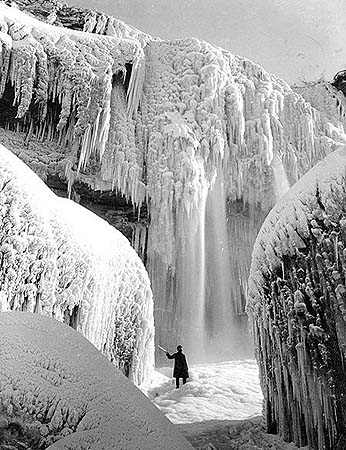

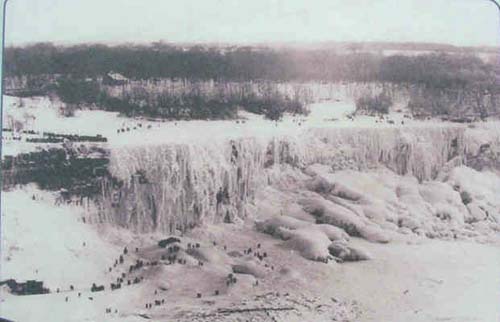 |
The tremendous volume of water never stops flowing, However, the falling water and mist create ice formations along the banks of the falls and river.
This can result in mounds of ice as thick as fifty feet. If the Winter is cold for
long enough, the ice will completely stretch across the river and form what
is known as the "ice bridge". This ice bridge can extend for several miles
down river until it reaches the area known as the lower rapids.
Until 1912,visitors were allowed to actually walk out on the ice bridge and view the Falls from below. February 24th of 1888 the local newspaper reported that at least 20,000 people watched or tobogganed on the ice. Shanties selling liquor, photographs and curiosities abounded. On February 4th 1912 the ice bridge broke up and three tourists lives were lost. |
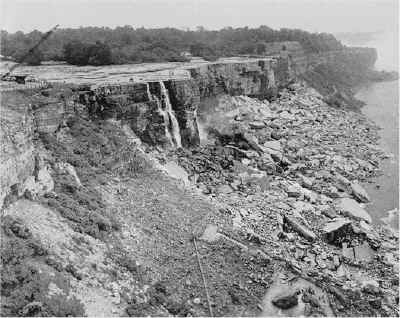 |
The flow over the American Falls was stopped completely for several months in 1969. The idea was to determine the feasibility of removing the large amount of loose rock from the base of the falls to enhance it's appearance. In the end the final decision was that the expense would be too great. |
| Collectively they are called Niagara Falls Categorized by these three names: American Falls (between Prospect Point and Luna Island) far left Bridal Veil Falls (between Luna Island and Goat Island) mid left Canadian/Horseshoe Falls (between Goat Island and Table Rock) right |
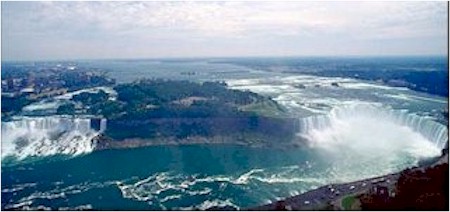 |
American Falls and Bridal Veil Falls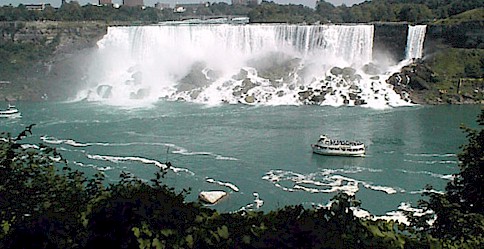 |
length of brink: 1060 feet height: 176 feet (due to rocks at the base actual fall is 70 feet) volume of water: 150,000 U.S. Gallons per second Actual amount varies, there are two hydroelectric plants which draw water into their reservoirs prior to the Falls. Their intake greatly affects the volume of water flowing over the falls. The amount of water being siphoned away depends on two variables. The time of year, and the time of the day. Flow is greatest in the daytime during peak tourist season (June, July, and August). In the event of an emergency the flow can be somewhat reduced by the hydroelectric companies increasing their intake. The Bridal Veil Falls is named for its appearance. It is located next to the American falls, separated by a small piece of land called Luna Island. |
Canadian "Horseshoe" Falls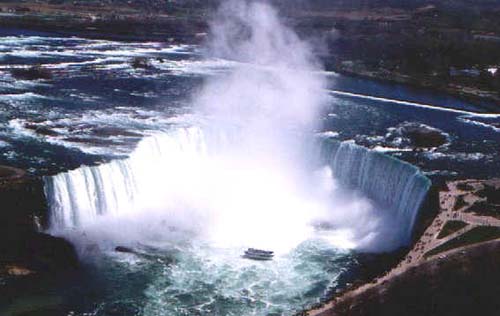 |
length of brink: 2600 feet height: 167 feet volume of water: 600,000 U.S. gallons per second Interesting fact: According to the U.S.G.S. (United States Geological Survey) of Niagara Falls, it appears that almost 1/3 of the Canadian Falls lies within US Territory. |